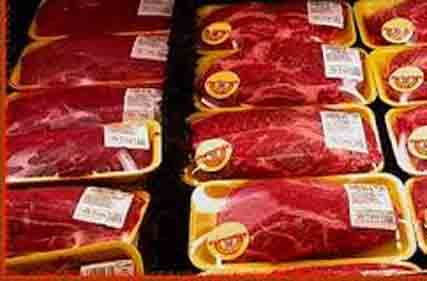
Rabobank’s senior animal proteins analyst Angus Gidley-Baird said for the Australian beef sector “it looks like we have reached the bottom of the market”.
Southern hemisphere beef-producing nations – including Australia – are continuing to increase production volumes, despite a global trend of production decline, Rabobank says in its recently-released Q4 Global Beef Quarterly report.
Although, the agribusiness banking specialist says, increases seen in Australian and Brazilian beef production have not been enough to offset the production declines in Europe and the US.
Rabobank says global beef production across “monitored markets” is expected to decline one per cent year-on-year in 2023, and “we forecast that 2024 will play out in a similar fashion”.
The report says the beef sector is seeing ongoing strong consumer demand in the US – although this may be weakening – accompanied by reduced cattle and beef supplies. But in Asia, weak demand and high inventory levels are testing the market.
The bank expects North American cattle prices to continue to track at high levels, while southern hemisphere prices remain soft.
Australian cattle prices dropped dramatically – down 28 per cent since June – while New Zealand and Brazil also saw prices fall, but by smaller amounts, the report said. Cattle prices in the US were steady, while Canadian prices rose three per cent between June and October.
Trends to watch for in 2024
Rabobank expects the ongoing slow global economic recovery will limit consumers’ expenditure and likely curb their spending on beef next year.
The quarterly report said in 2023, many markets – particularly in Asian countries – did not experience the growth in consumption expected as economies recovered from Covid-19, and it was clear consumers were being much more cautious in their purchase decisions. “We expect these conditions will continue into 2024” it said.
Indications from China are that the type of products in demand is changing, Rabobank said, with more attention being paid to value-for-money products, and less to premium ones, driven by consumer caution.
“This consumer caution may be supported initially by reduced volumes of more expensive North American beef and increased volumes of Australian and South American beef,” the bank said. “However, when production in the US contracts to the point where it exerts upward price pressure on global beef prices, we may see some pushback from global beef consumers. It is possible that 2024 will see margins in beef supply chains being squeezed to manage higher prices and accommodate the consumer.”
Middle East conflict
The Rabobank Beef Quarterly says the conflict in the Middle East is not expected to materially impact beef trade.
“The import volumes of Israel and the Palestinian territories make up approximately one per cent of global beef imports,” the report said. “If the conflict extends across the broader Middle East and North Africa region, the impact on global beef trade remains relatively small.”
The bank estimates that the wider Middle East area accounts for eight per cent of global beef imports, with Egypt being the largest importer, sourcing largely from Brazil (via the Mediterranean Sea). “However, there may be indirect impacts if fuel and energy costs rise. Furthermore, the Middle East is an important import market for poultry and sheepmeat, and any disruption to this trade may cause a rebalancing of protein trade around the world,” the report said.
Australia
Rabobank’s senior animal proteins analyst Angus Gidley-Baird said for the Australian beef sector “it looks like we have reached the bottom of the market”.
Mr Gidley-Baird said the higher volumes of cattle, congested supply chains, limited processing capacity and forecasts of poor seasonal conditions continued to weigh on the Australian cattle market through the third quarter.
“In response, the ECYI (Eastern Young Cattle Indicator) dropped 37 per cent through Q3,” he said. “Despite the same conditions prevailing in October, prices found a floor and levelled out.
“We believe that the producer uncertainty that was causing prices to drop has eased and, as we head toward summer, producers will be more certain about what stock numbers they will run, returning some stability to the market.”
Processing numbers are expected to see some change in the coming months, Mr Gidley-Baird said. “Abattoirs are believed to have been running strongly for the last seven months, to the extent possible given labour constraints,” he said.
“With the holiday season approaching and some cattle still backed up in the system, it is uncertain if plants will shut down at year end, as is normal, before adding additional shifts in the new year, or if they use this period to get through some of the cattle that have built up in the system.”
Either way, the bank is expecting slaughter numbers to increase in the first quarter of 2024.
-Rabobank
